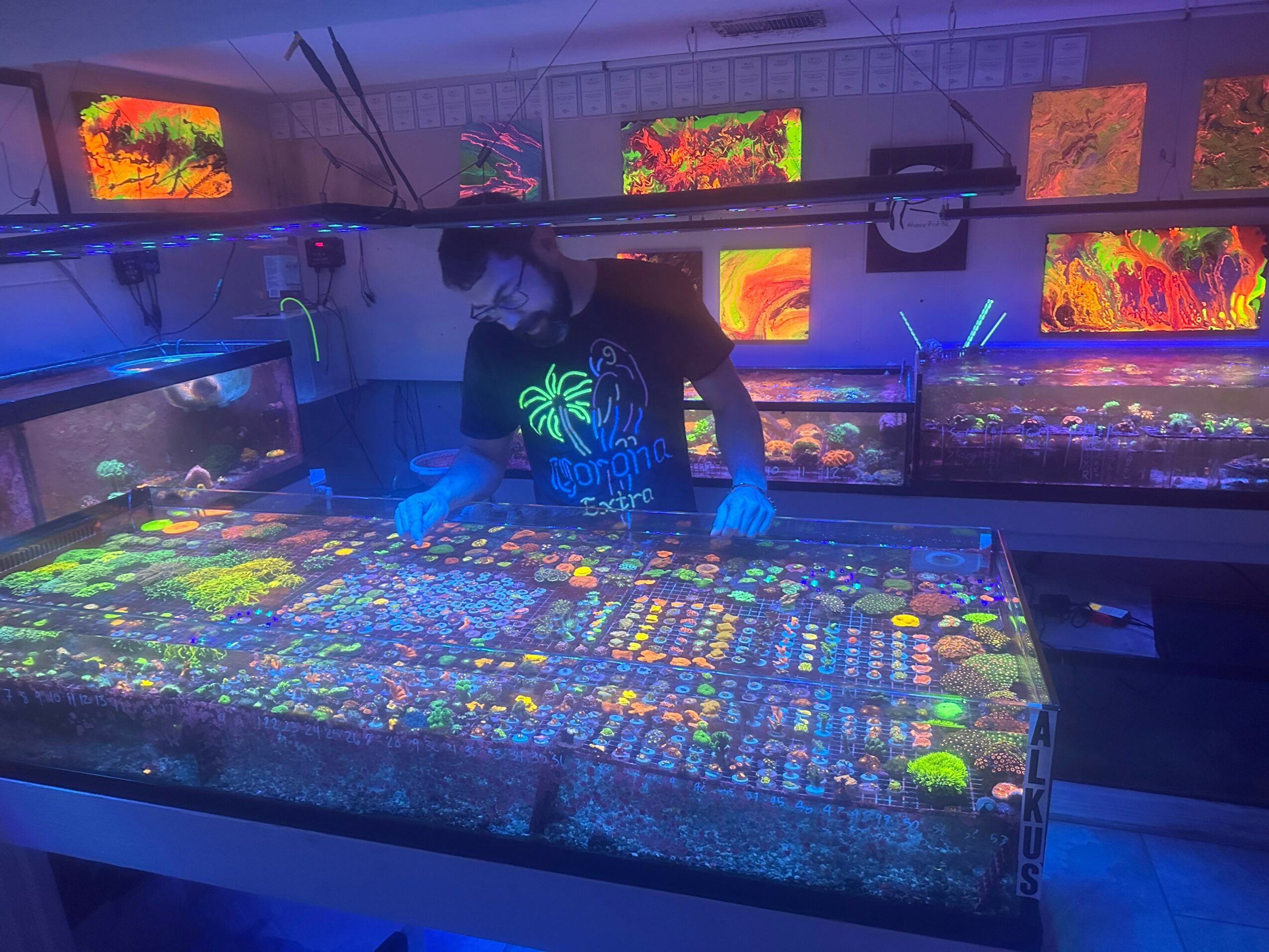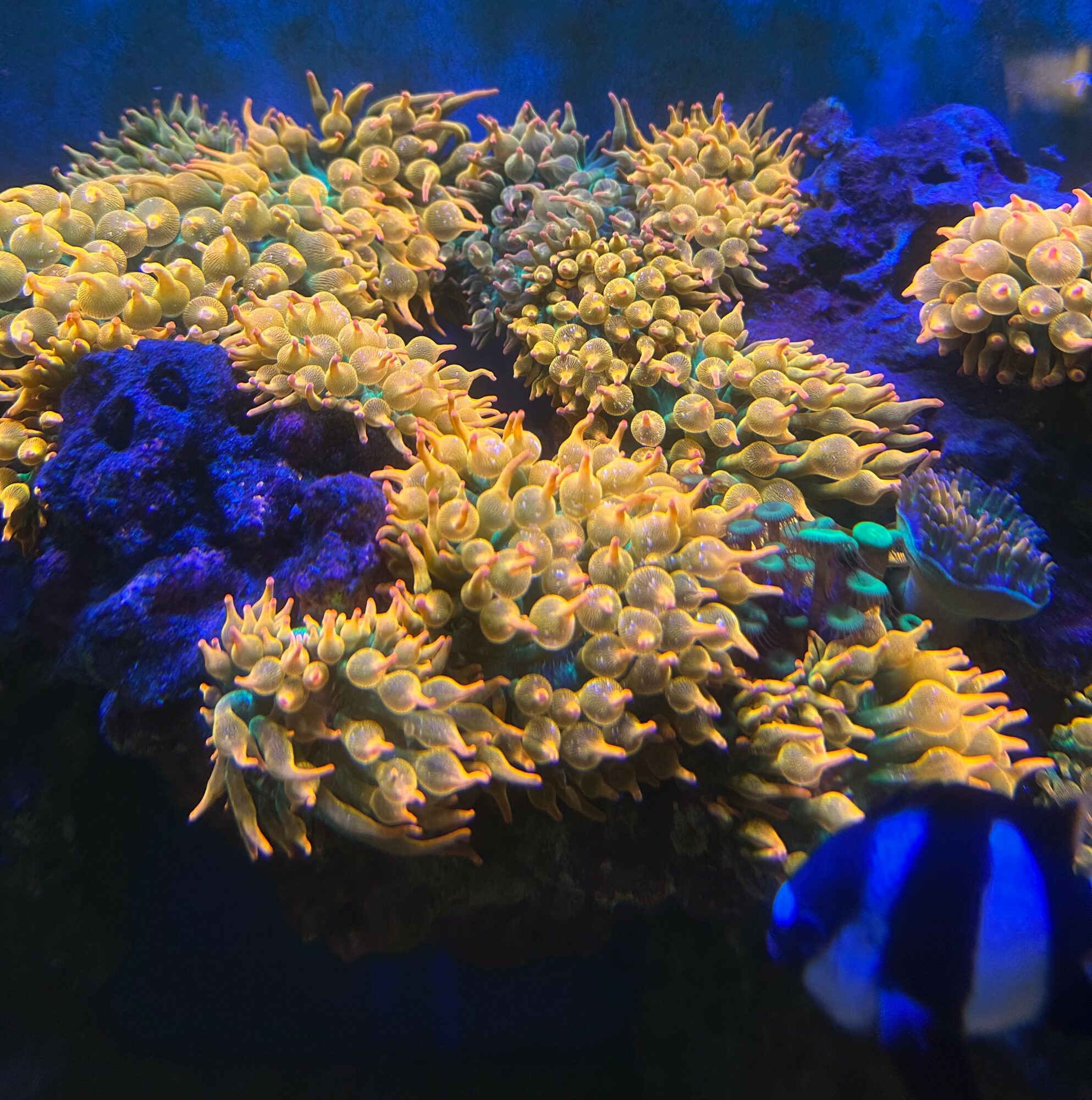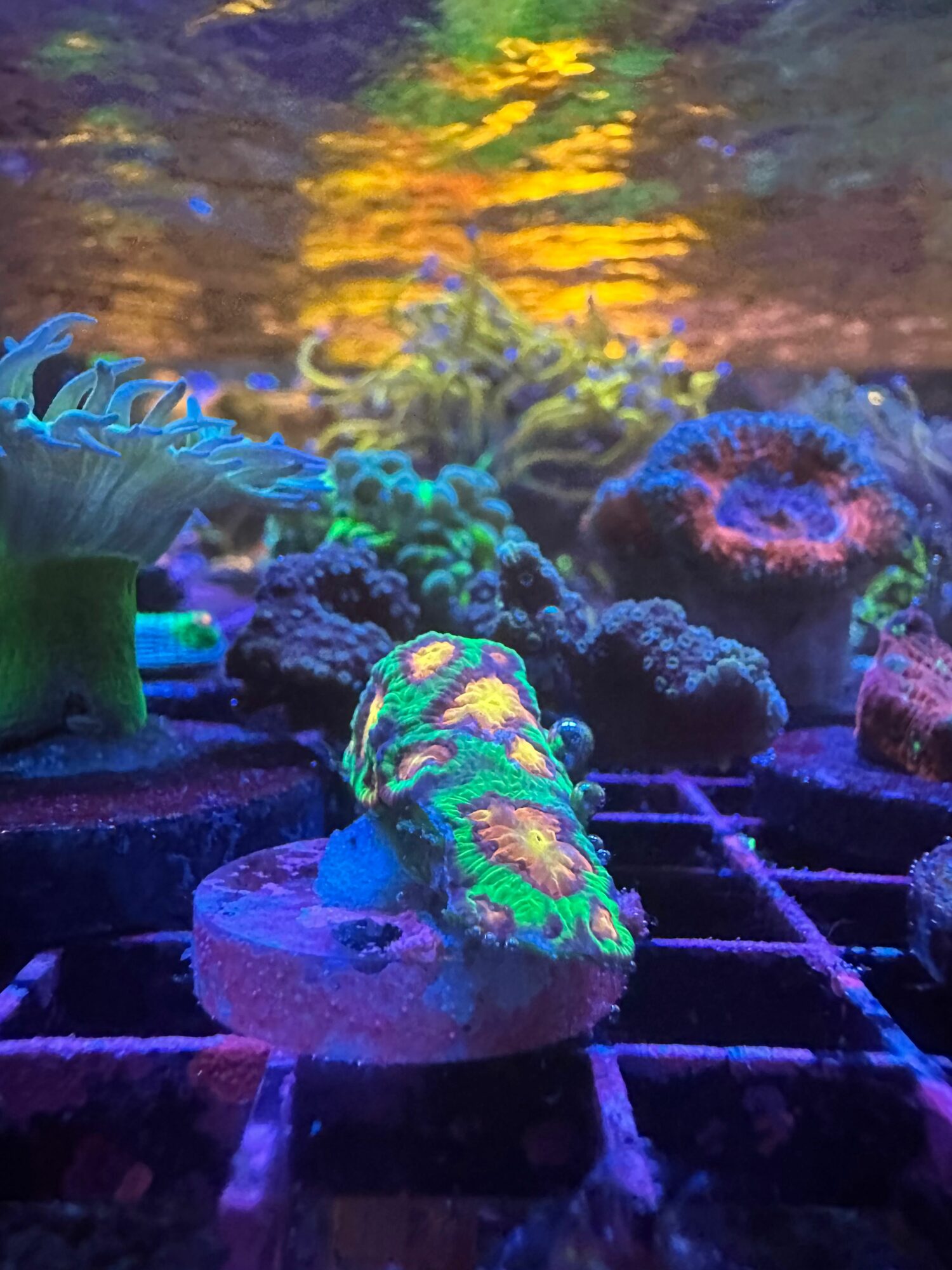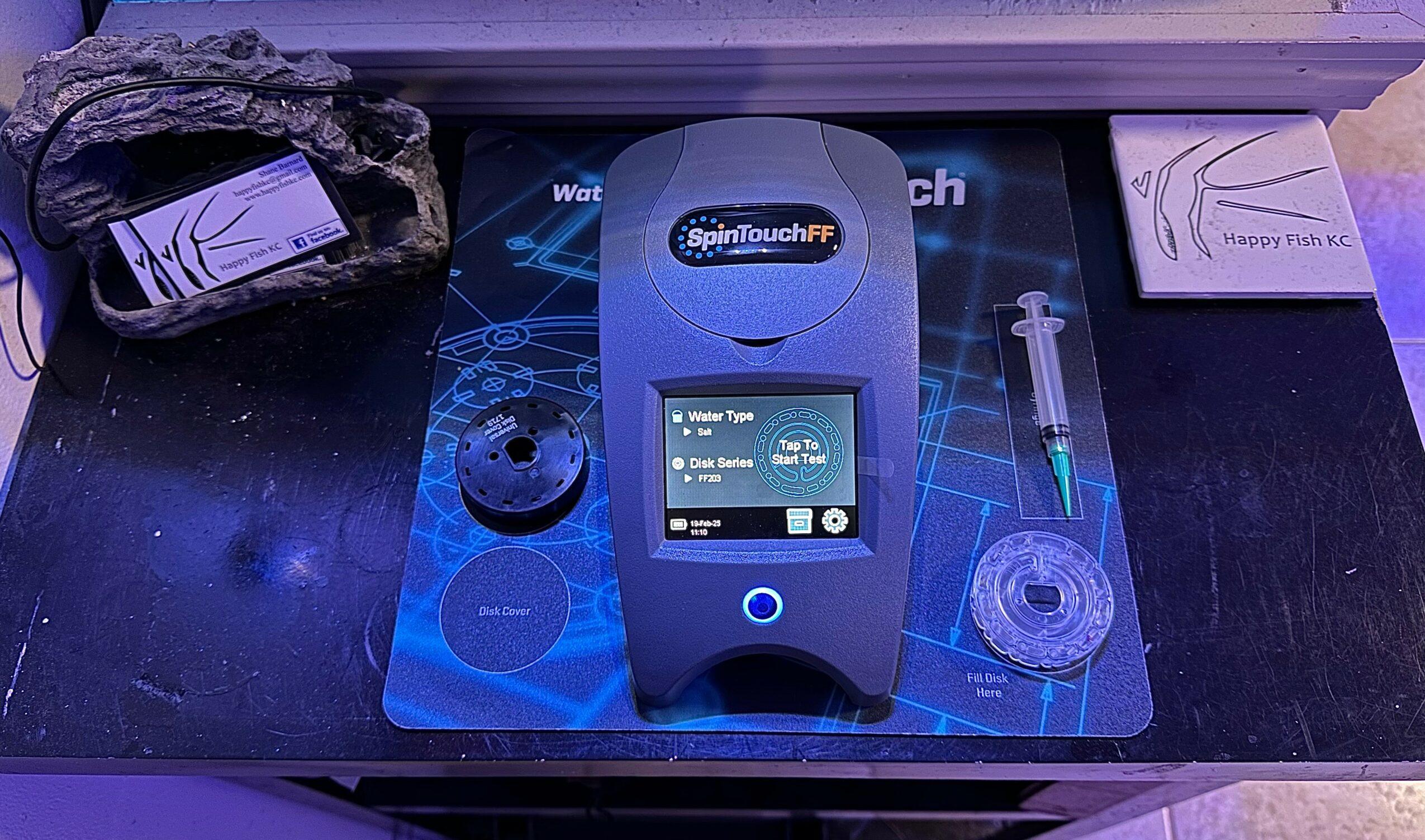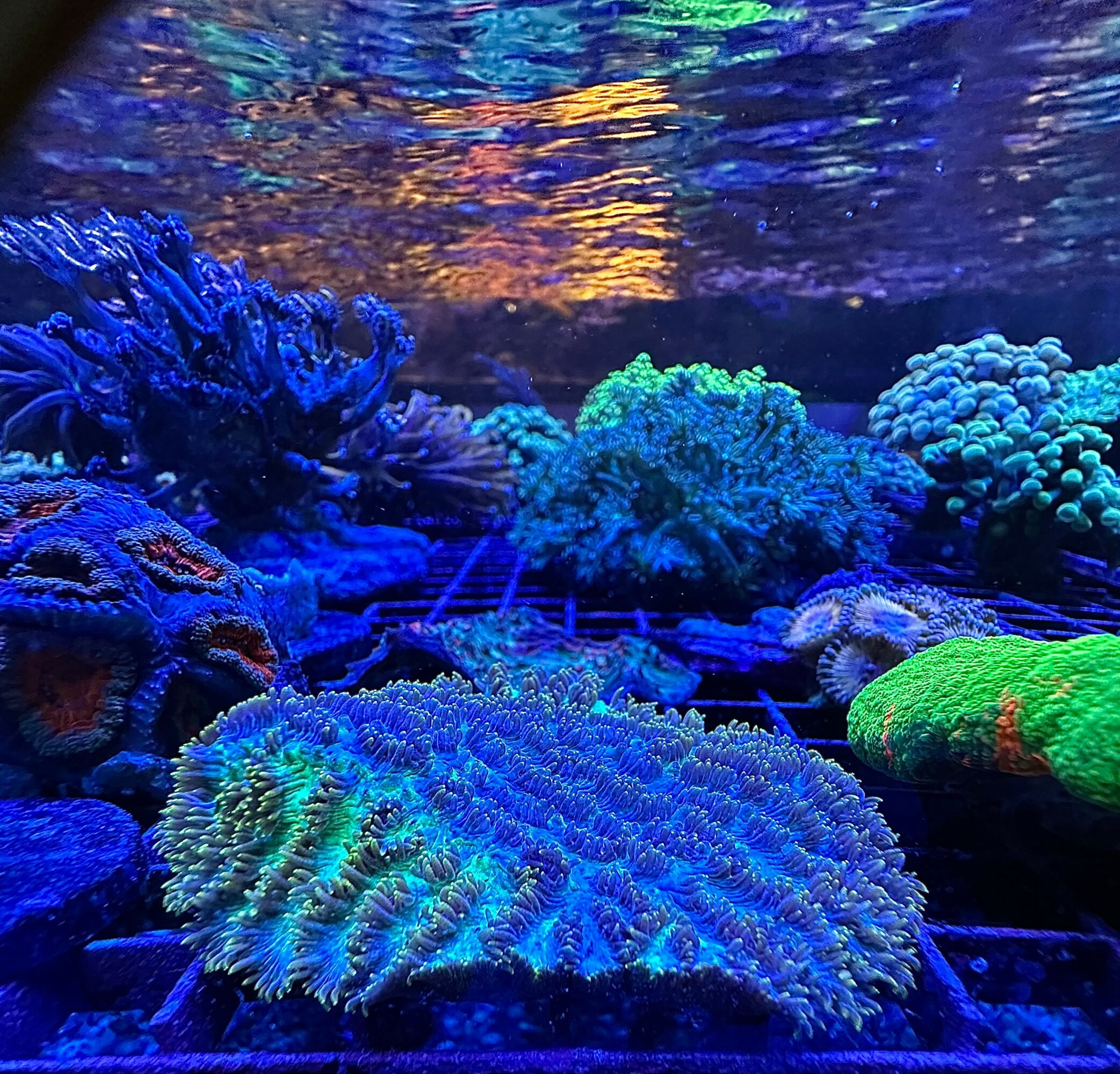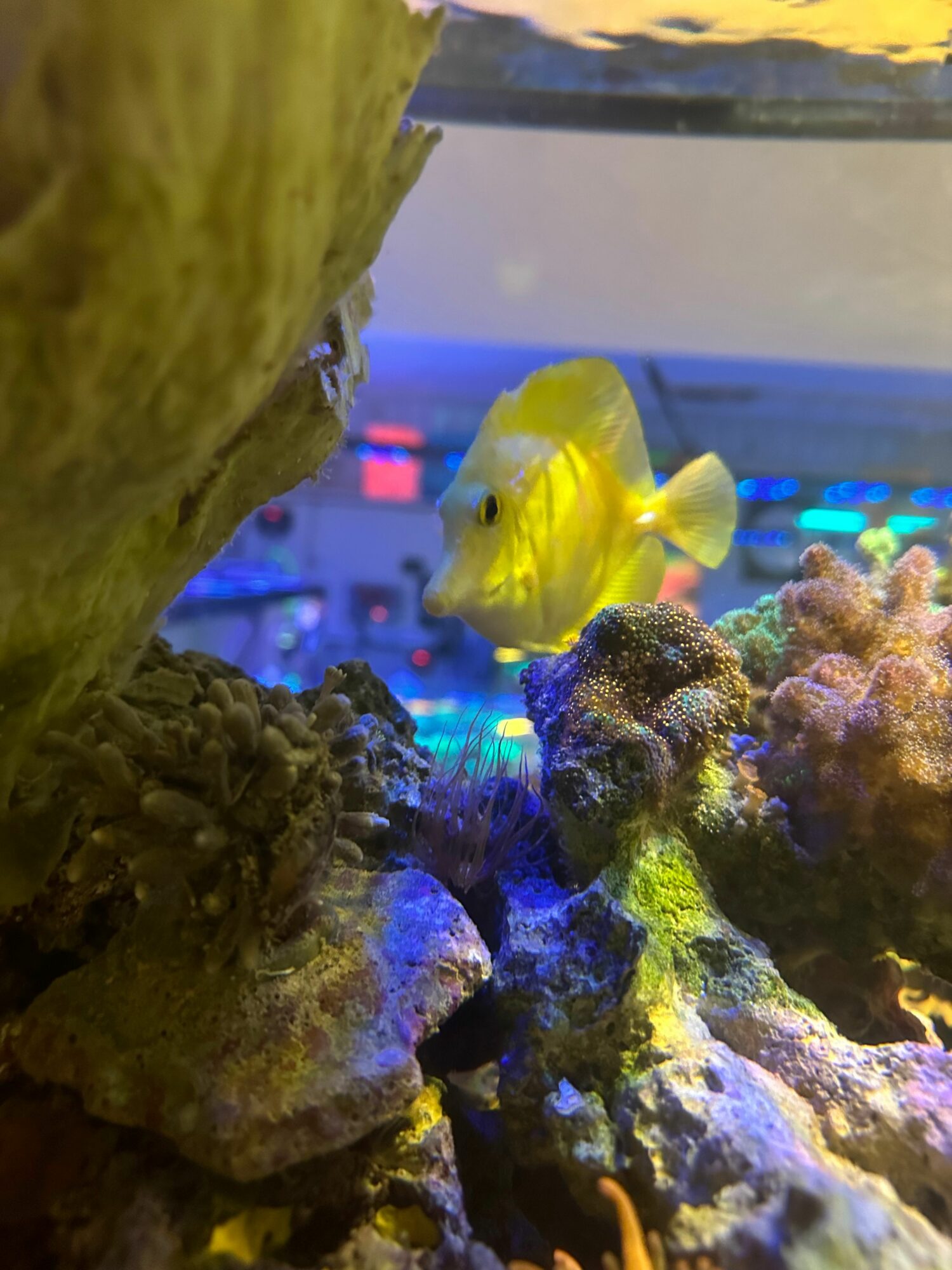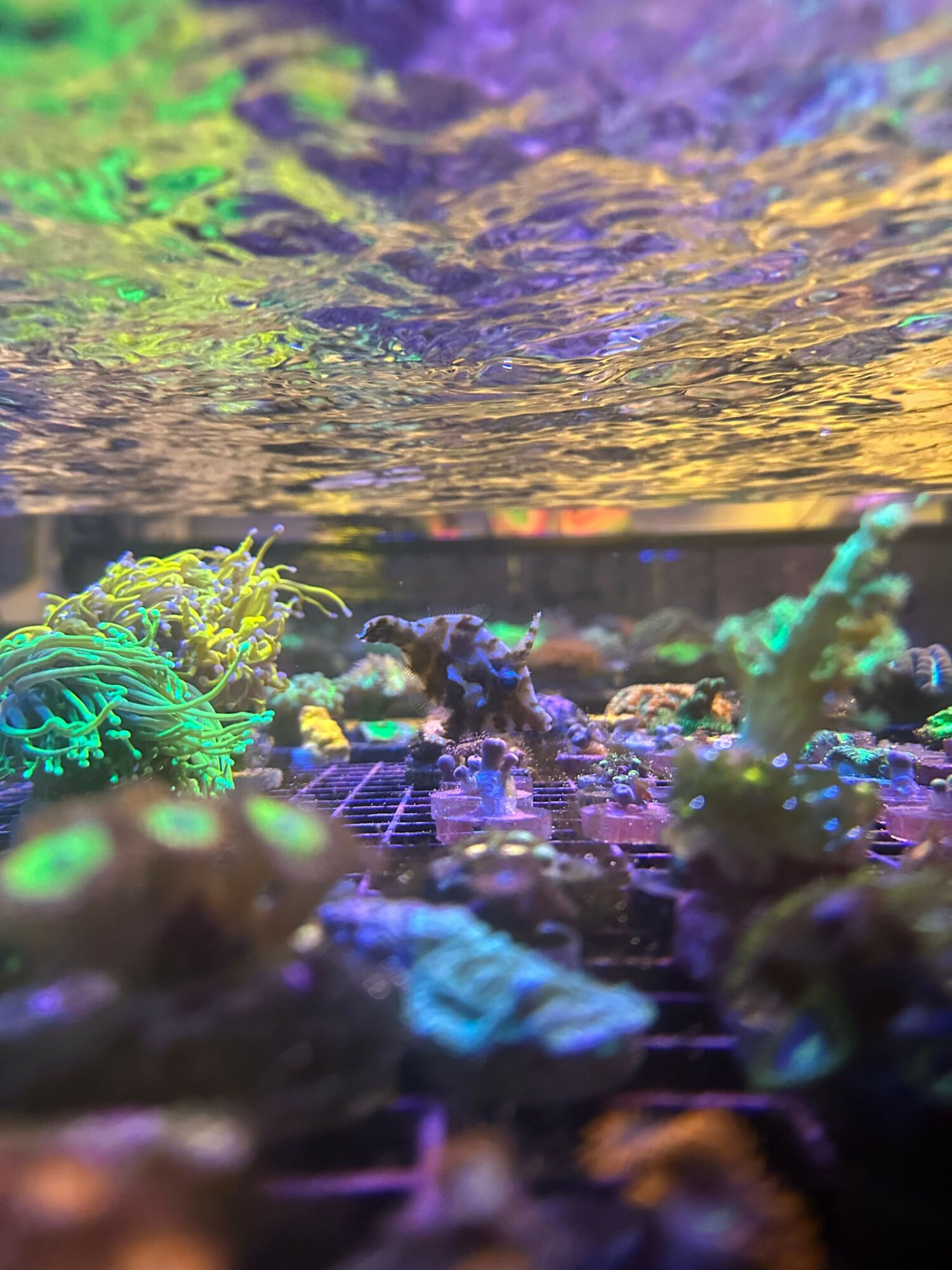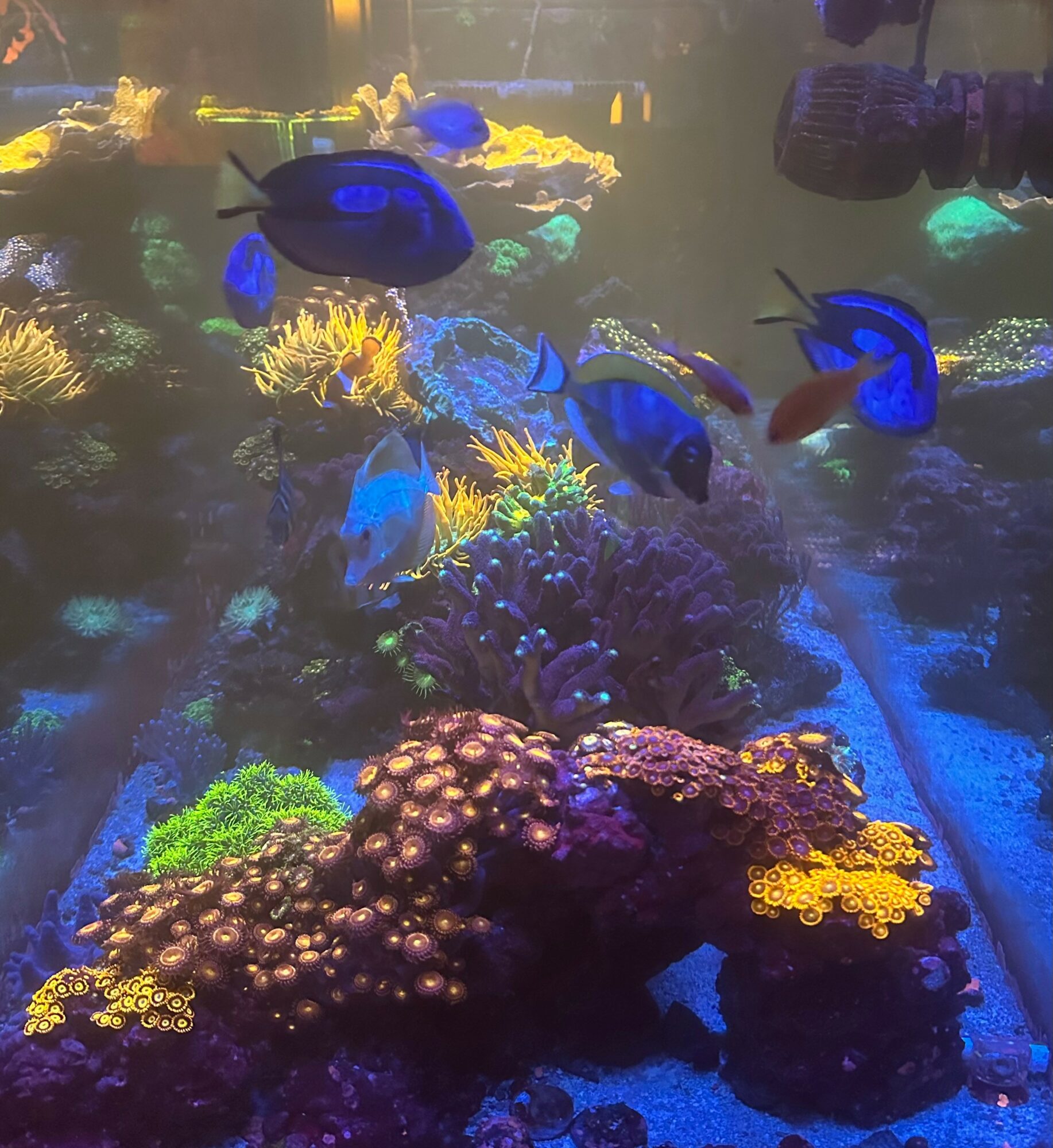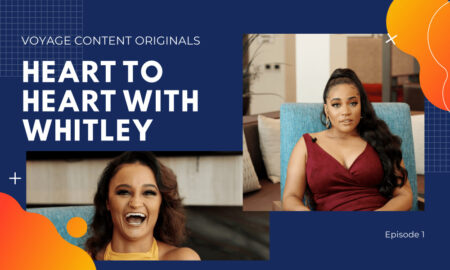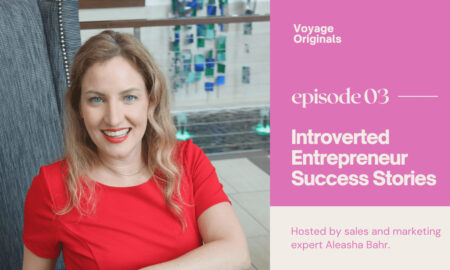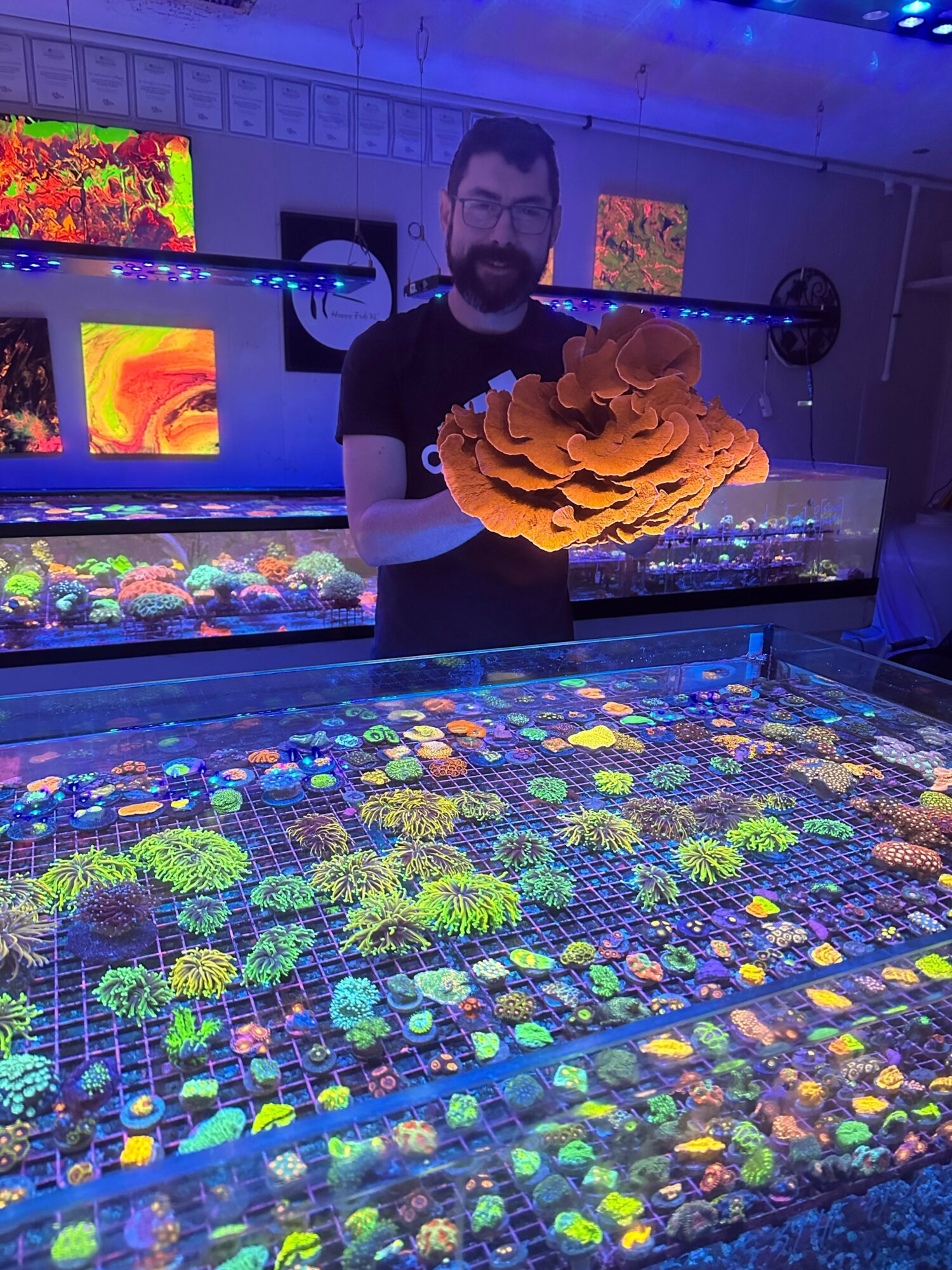

Today we’d like to introduce you to Shane.
Hi Shane, so excited to have you with us today. What can you tell us about your story?
My first aquarium came off of the side of the road in Lawrence KS, where you see tons of random stuff like that on the side of the road. It was an already put-together reef tank that we took apart and built it back up, set it up in my shop garage. It was just meant to be a bait fish holding tank. I was fascinated with fishing and fish behavior, and was actually tournament fishing at that time primarily for largemouth bass. But I had an interest in fish behavior. So that, combined with a transparent bait holding tank, was fascinated witnessing what was going on. I was interested in fish behavior because you need to know how fish think in order to fish. There’s this big unimaginable world underneath your boat. So we would catch local wild fish, brought them into the tank, and later witnessed a broadcast spawning with minnows. After seeing that, I thought it would be cool to spawn a tropical fish. So on craigslist, I saw a 20 gallon aquarium with 4 giant green severums for free. So I replaced the baitfish that were in that original tank I had, with these new cichlids. Within days, they spawned and were sitting on a clutch of eggs. My immediate thought was “Ok, what’s the most expensive cichlid I can buy?” Because they had probably 1000 babies. My friend Ian from PetWorld helped me to get more cichlids, mainly Central/South American fish. After doing this with Ian for a bit, I realized there was a huge market in fish. So I decided to invest a little more into this. So I ended up moving from Severums to Discus, a much fancier and more tropical fish. I invested a large amount of money into around 10 to 12 Discus. Due to their similar behavior, it was relatively easy to take care of the Discus. So I spent a year raising them, later pairing them off, before I actually got my first spawn of discus. During that year, I also got some Angelfish, Rams, essentially just some more south American fish. At this point, I had only a handful of aquariums. But when the discus started actually spawning, I definitely needed additional aquarium space. I then rented a house in Mission, and I put ~100 aquariums in it. Got up to ~26 pairs of discus. I began selling them online, and then shipping them out of Kansas City. Back then things were more in person, less internet, so it was a very good time to travel to different aquarium societies, meeting pet store owners, etc. At this point my business was all freshwater, and I only had one saltwater tank “for fun” while having the 100 other freshwater tanks. Taking care of everything, I would work about 100 hours a week, and I loved every minute. That was around 15 years ago by now. Then, I moved from mission, into a new fish room in KC for 2 years, so 13 years ago. Then I moved back to Lawrence for a year. And then 12 years ago, I moved into our current location. Had kept a large batch of F1, the first generation blue diamond discus, adult size with a custom name “KC Blues”. ~50 Adult pairs. Of course, having to move all of these super important fish, I was somewhat frantic to move them in. The biggest challenge was making enough water and room for 100 adult discus. I collected rainwater to start but ended up losing all 100 of them because of the new roof. Apparently, some chemical was mixed in, tainting the rainwater. I had the top quality of discus, I spared no expense for the newest color, genetics, etc. But all my brood stock died in a day. At that point, I basically left the aquarium business. The one saltwater tank I had was doing well despite that, with large colonies. A local friend had given some colonies that he had grown out as well. When I moved that tank, we propagated a bunch of corals, and it basically stole my interest. I was already involved with the fish community, so I was able to simply switch from discus to coral. I also was able to keep my same customer base essentially. There weren’t very many people propagating at this point in time. People just wanted to buy coral to look at it. So aquaculture wasn’t big in saltwater at this point in time. I was a fulltime stay at home dad for 2 years with a baby when we moved into our current location. So at this point, I became what we jokingly call a “frag farmer”. Propagating all kinds of different frags for the KC community, as well as shipping nationwide. And the more coral that we’re able to grow, that means one less coral that needs to be taken out of the ocean. I’ve worked with scientists, other local petstores, and even aquaculture facilities to help the industry be more sustainable. One time, we even had some coral actually breed in our main system. That’s different from what we usually do, which is just letting a coral piece grow out, until we’re able to “frag” it, turning one piece of coral into upwards of 30. Fragging is a process in this industry that we’re no strangers to, and whenever we livestream for auctions, we also like to livestream the more fun sides of the hobby, and not just the business side. So we’ll show off our tanks, fragging process, and really create a nice environment. Because that’s how we really get Happy Fish. By making friends, creating great connections. We’re more than a business, we’re trying to make a difference. Multiple times, fish and coral have been severely affected by overfishing from the aquarium industry. So by breeding, and propagating, we’re able to really help the ocean. Making tanks that not only look good, but also feel good, knowing nothing needed to be hurt to make it. It was all one step at a time, building up our current fish room, changing flooring, walls, repainting, until we converted (and still converting) the location into a propagation facility, public display and public retail. We have also been participating in global conservation efforts by propagating coral in-store.
Would you say it’s been a smooth road, and if not what are some of the biggest challenges you’ve faced along the way?
We essentially restarted multiple times. Most of this was mentioned in the previous question, but having to build back up from scratch multiple times has been a challenge. But despite that, it still feels rewarding to be in this industry. Being able to create a small ecosystem, that not only grows, but thrives, all thanks to you and your efforts. We’ve had some of these fish for years, in our main show tank we have a trio of aquacultured Blue Tangs (Dory from Finding Nemo), and seeing them grow over all these years has been a really satisfying journey, and it gives us more insight into the differences of wild and captive-bred tangs. Normally, 3 of the same kind of tang would be a death sentence for them, but since they’re aquacultured, they’re more used to that, and are able to thrive in a tank with each other and other tangs more easily as a result. Little things like that show that despite any hardships we may encounter, it’s worth it in the end to see some Happy Fish.
Alright, so let’s switch gears a bit and talk business. What should we know?
We’re a private business based out of Lenexa, KS that specializes in the importation and propagation of various species of coral, and fish. We do Facebook Live auctions weekly, and recently have also begun to do live auctions on TikTok @happyfishkc. Many of our fish are here for a while, in quarantine, assuring that they are actually able to thrive in a customers tank. This is unlike other businesses, that tend to sell the fish as soon as they come in, which often times leads to disaster. So our quality of fish and coral, is what we’re most proud of, and why we are Happy Fish KC. We also do an 8-panel water test, so we can test for pH, Alkalinity, Phosphorus, Calcium, Magnesium, Ammonia, Nitrite, and Nitrate. We keep those test results, so when you come back in for a second test, we’re able to see what’s (hopefully) improved. Essentially, we test for everything, and are able to help you plan your adjustment plan for your tank. We do this by using a SpinTouch FF, a device that (as far as we’re aware) are one of the only aquarium & fish stores in the States that actually have one. On top of that, we have some of the lowest prices on items you’ll see. Our fish are constantly priced cheaper than our competitors, and we definitively have the cheapest salt. Our Fritz Red & Blue Box salt are priced much lower than any of our competitors, and through our research we’ve found it’s the cheapest price. We have yet to be disproven on that. We also are very competitive with our coral pricing. Even though our coral isn’t on our website, we do “power hour” on auctions a lot, where we start pieces at $1. On top of that, if you stop by, you’re guaranteed to get a good deal.
What sort of changes are you expecting over the next 5-10 years?
It’s likely going to rely more on aquaculture and conservation efforts. I imagine that one of the many science fields will look into coral for more medical efforts for example, which would greatly increase conservation efforts. But as of right now, it’s hard to protect things in third world countries. Especially with things like pollution, and fishing opening back up in protected areas. I do believe that there’s a good chance that we can find some kind of medicinal or any scientific value in the reef, let’s just hope it’s not too late.
Pricing:
- Fritz Red & Blue RPM Salt Box – $65
Contact Info:
- Website: https://www.happyfishkc.com/
- Instagram: https://www.instagram.com/happy_fish_kc/
- Facebook: https://www.facebook.com/profile.php?id=100063743075358
- Other: https://www.tiktok.com/@happyfishkc?lang=en
